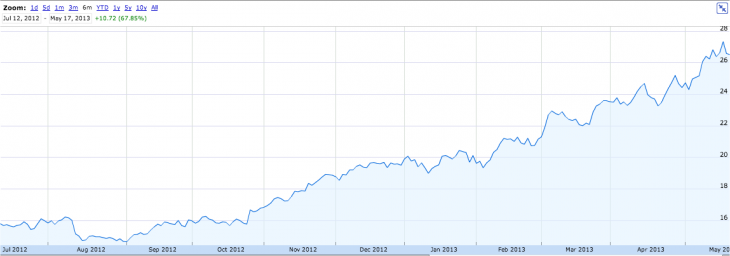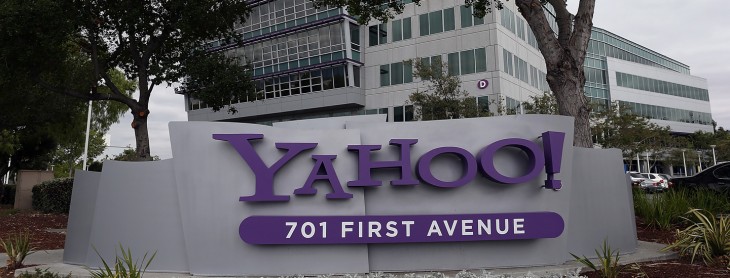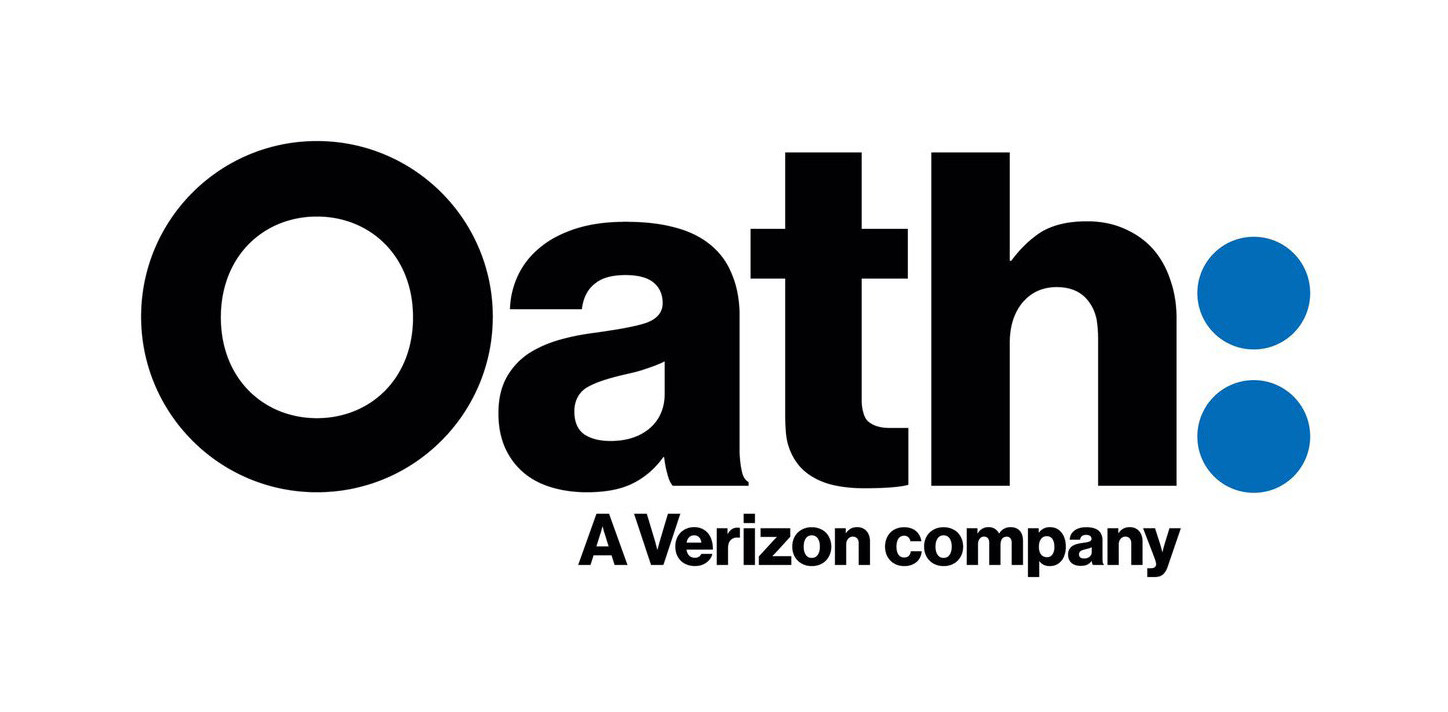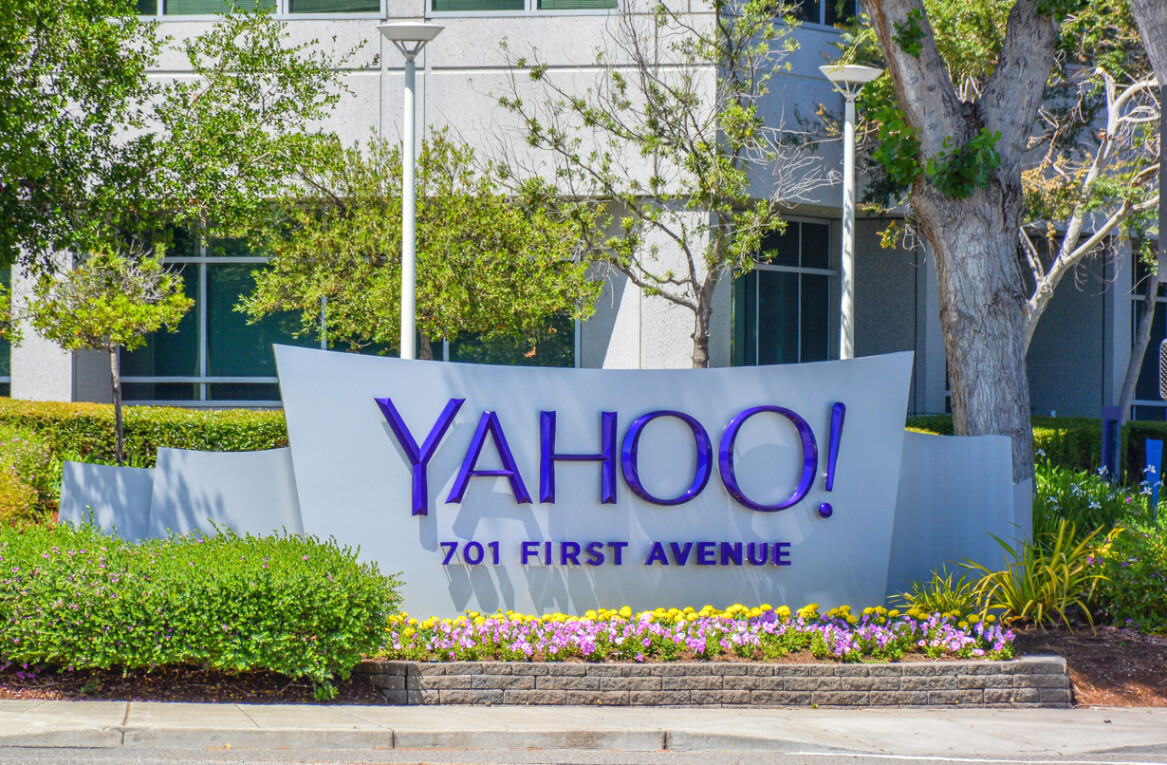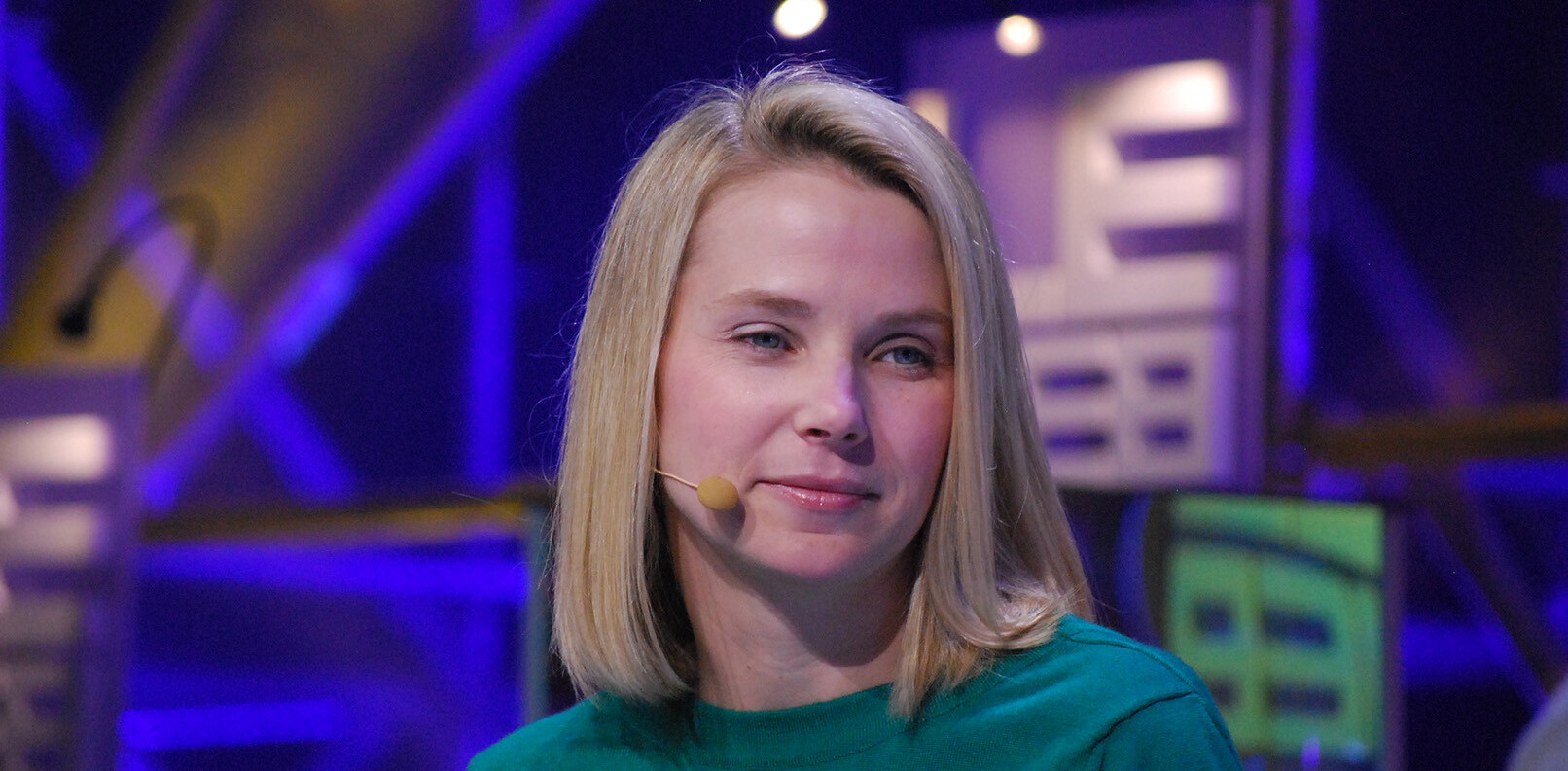
Yahoo has been plagued by leadership changes among its C-level positions for years. Many of its CEOs have been struggling to find ways to either cut down on cost or innovate on products, but none appear to have been able to turn the company’s performance and reputation around. The hiring of Marissa Mayer as its CEO has helped to change the company’s momentum, leading it towards a better position, at least where investors are concerned.
300 days ago
Mayer and her company have certainly been in the news quite a bit over the past few months and if you look at the company’s quarterly earnings, there seems to be some sort of revival happening there. While the title of this post mentions “turnaround”, it by no means that Yahoo is in an era of prosperity. However, Mayer appears to have succeeded where her predecessors have failed.
The former Google executive joined Yahoo just a little more than 300 days ago. She currently has the second-longest tenure as CEO following founder Jerry Yang’s departure from the role. If you look at the stock price of Yahoo, in just the first 300 days, Mayer’s leadership has helped the company right its finances, bringing it up to levels not seen in years.
Below is a look at Yahoo’s stock activity from 2006 to May 17, 2013. In the post-Yang era, investors appeared to lack confidence in where Yahoo was headed and it greatly affected its stock. As we approach 2012, the number makes an upward direction to close at $26.52 as of last Friday.
Through the rest of this post, we will explore the Yahoo’s current direction and the moves Mayer has made in the first 300 days.
Yahoo’s Previous CEOs following Jerry Yang
As mentioned earlier, Yahoo has been a revolving door for CEOs. In the past four years, only Carol Bartz has been CEO longer, for a total of 966 days. To be fair, two subsequent leaders held the role on an interim basis, but it’s safe to say that the company has been in desperate need for someone to right the ship lest it continue to sink any further.
- Ross Levinsohn: May 13, 2012 – July 16, 2012 (64 days)
- Scott Thompson: January 4, 2012 – May 13, 2012 (130 days)
- Tim Morse: September 6, 2011 – January 4, 2012 (120 days)
- Carol Bartz: January 13, 2009 – September 6, 2011 (966 days)
Formerly CEO of software design and service company Autodesk, Bartz announced to the world on January 13, 2009 saying that she came to Yahoo to “kick some butt”.
However, her brash style (remember the “fuck off” incident with TechCrunch’s Michael Arrington?) and the impact her attempts to streamline things didn’t make her any friends. During her tenure, Yahoo cut 4 percent of its global workforce, or about 600 jobs, a move that was billed as being a “part of our ongoing strategy to best position Yahoo for revenue growth.”
In a struggling company, its not surprising that CEOs would find different ways to address huge operating costs or continuing dismal financial performance, but during Bartz’s reign, the impact didn’t seem to be as positive as she expected.
Investors seemed to have a mixed reaction to her leadership with the stock price jumping around rather erratically. What’s noteworthy is Bartz’s leadership is stained with poor quarterly earnings. One of the lowest stock price drops in the past five years since November 21, 2008, when Yahoo was trading at $9.39 a share also happened on her watch.
Bartz was fired rather unceremoniously in September 2011 by Yahoo’s Chairman of the Board over the phone:
To all,
I am very sad to tell you that I’ve just been fired over the phone by Yahoo’s Chairman of the Board. It has been my pleasure to work with all of you and I wish you only the best going forward.
Carol
Sent from my iPad
Tim Morse, Yahoo’s Chief Financial Officer, was tapped to replace Bartz at the helm on an interim basis, but any efforts he made had little effect. Granted, he was only CEO for a total of 120 calendar days. Eventually, Scott Thompson, former President of PayPal, was selected to be its new chief.
Aside from that thing about his resume, Thompson was believed to be the leader Yahoo hoped would help it turn it around. However, instead of a 180-degree turn, Thompson hit the accelerator to continue aggressive ways to cut costs. In his 130 days as head Yahoo, he oversaw the termination of around 2,000 people, or 14 percent of the company’s workforce — more than Bartz did in her tenure, by 1,400 more jobs.
For all his efforts, Thompson did little to improve Yahoo’s stock price as it remained constrained between $14 to $16 per share.
Remember that resume issue we mentioned earlier? Yahoo fired Thompson because of that.
Next up to bat was Fox Interactive President Ross Levinsohn who was the man responsible for purchasing MySpace for $500 million. But in an interim role, he was unable to do much, mostly because of shareholder in-fighting from Third Point founder Dan Loeb, who apparently grew impatient at the decay of his stock’s value and sought to shake up Yahoo’s management.
Happy days are here again (or at least they’re getting better)
Yahoo is starting to see some hope for itself with Mayer at the helm. It’s not where it wants to be, but it’s getting there. Case in point, if you look at the stock price since Mayer became CEO, the company has seen its share price rise to a high of $28, something not seen in years.
Yahoo’s quarterly earnings shows some signs that things seem to be improving. In Mayer’s first quarterly earnings report, Yahoo reported revenues of $1.09 billion and an no-GAAP EPS of $0.35, beating Wall Street’s expectations. It followed it up with a successful Q4 2012 report of $1.22 billion in revenue.
The starting quarter of fiscal year 2013 wasn’t that great, but it wasn’t bad either. To say the least, Yahoo still managed to post impressive numbers. Investors appeared happy with the company’s performance and it has definitely impacted how they view the stock price. In addition, no massive layoffs have occurred at the company over the past 11 months.
In one of her first acts as CEO, Mayer sold Yahoo’s stake in Alibaba. It was believed that she would take the $7.6 billion in proceeds and invest it in potentially acquiring one of the large Internet properties like Foursquare. However, Mayer has been setting her sights on smaller companies, snatching up 22 entrepreneurs from companies like Stamped, OntheAir, Snip.it, Alike, Jybe, Summly, Astrid, GoPollGo, Milewise, and Loki Studios.
We recently added 22 entrepreneurs to our growing mobile team. Welcome to Yahoo! @astrid @gopollgo @milewise @lokistudios!
— Yahoo! Inc.(@YahooInc) May 10, 2013
All of these companies are aimed at bolstering Yahoo’s mobile efforts, which Mayer has said Yahoo has fallen behind on. The work looks to be paying off as last January, she said there were 200 million active mobile users. In April, the company had 300 million active mobile users — an increase of 100 million.
In order to further capitalize on mobile usage, Yahoo is hoping that the enormous amount of content that the company produces can be transferred to smartphones and tablets in a user-friendly manner. Mobile-first is her game plan.
The photo-sharing social network Flickr is another example of Yahoo’s turnaround. Long a stagnant property in the views of past company CEOs, it finally received some updates under Mayer’s reign. Photographers have been clamoring for a better photo service, with occasional chatter of people severing ties with Flickr and instead switching over to Google+, 500px, or other services that they saw as being more social and understanding of their needs. Under Mayer’s reign, Flickr released a redesign of its iOS app, which saw an increased usage of the app by 25 percent.
People are beginning to take notice of the improvements, and not just users. Yahoo has been plagued by layoffs and numerous employees leaving the company for various reasons. Under Mayer’s leadership, they’re coming back. Last quarter, she said that Yahoo’s workplace standing and employee belief in the company had improved.
Mayer says that there are more job applicants now (more than triple the number during the quarter) and 14 percent of its new hires are “boomerangs”, or former Yahoo’ers who have returned to the company. She has also enacted employee-focused initiatives designed to bolster morale and give employees an opportunity to test new products.
However, while there might be reason to celebrate, Mayer cautions that any revitalization of the brand will happen in the long-term. She equates it to a “series of sprints” to help bring back the company’s success and has told investors she is seeing “continued stability” for Yahoo in the future.
Not quite practically perfect in every way
While Mayer has been making purchases of smaller companies and moving towards rapidly improving Yahoo’s mobile-first strategy, what about search? There hasn’t been any major news on how it will seek to rival Google or even Bing, although Yahoo did sign a deal for a twelve month search partnership with Microsoft.
Last month, Yahoo also killed off a slew of services as a means to “sharpen its focus”. The company shut down several services, many people probably didn’t really know existed: Upcoming, Yahoo Deals, Yahoo SMS Alerts, Yahoo Kits, Yahoo Mail and Messenger feature phone apps, and older versions of Yahoo Mail. One of those products, Upcoming, made the news cycle when its founder Andy Baio penned a post calling for a way to archive it before Yahoo shut it down.
What’s more, some of her acquisitions have not followed through. In March 2013, the Wall Street Journal reported that the company was in talks to acquire the majority share of the video social network Dailymotion for $300 million. The move would enable Yahoo to grow its video presence internationally while Dailymotion would establish a foothold in the United States. A month later, the French government put a stop to the purchase saying that that Dailymotion was too important for the country and wanted it to remain owned by a French company.
There may also be some who feel that getting acquired by Yahoo is just a way to exit, and that the purchased company will ultimately be shuttered. If you look at many of the companies Mayer purchased during her tenure, most have quickly announced that it would be closing as the team joins Yahoo. And so while Mayer seeks to implement a startup attitude, those companies targeted by Yahoo could be weary of selling to Mayer because of potential neglect to the product they slaved away on for years.
Mayer’s Instagram moment
Today, Yahoo stands on the cusp of a potential achievement. Mayer and the company’s board agreed on a $1.1 billion price for microblogging platform Tumblr. Whether the company accepts the deal remains a mystery, although with Yahoo holding a press conference tomorrow, signs point to the deal happening. TNW’s Alex Wilhelm breaks the deal down like this:
Tumblr is a very valuable property, given its reach, demographic, and momentum; however, as a financial entity, it’s a goat rodeo and a half. The company burned through $85 million in two years, and now has two options: raise a new round, or sell.
The astonishing $1.1 billion offer would be akin to Facebook CEO Mark Zuckerberg’s $1 billion offer to Instagram on the eve of the social networking company’s IPO. In this instance, Yahoo’s deal is reportedly for all cash, not a mixture of it and company stock.
If the deal does go through, it will be a defining point in Mayer’s career and may help solidify her career as someone who successfully turned Yahoo around. However, before that happens, she needs to find a way to make sure these acquisitions and her decisions benefit the company and aren’t just talent-stealing deals.
Investors and Yahoo appear to be happy with Mayer’s performance so far, and she has certainly taken some risks. Will these pay off big time? If they do, it will be have a huge impact on Mayer’s first at-bat as CEO and have a beneficial impact on a company many long-thought was dead.
Top image credit: Chip Somodevilla/Getty Images
Photo credits: Carol Bartz via Justin Sullivan/Getty Images, Scott Thompson via Reuters, Yahoo building via Justin Sullivan/Getty Images, Yahoo/Tumblr via KAREN BLEIER/AFP/Getty Images
All stock graphs via Google Finance
Get the TNW newsletter
Get the most important tech news in your inbox each week.





